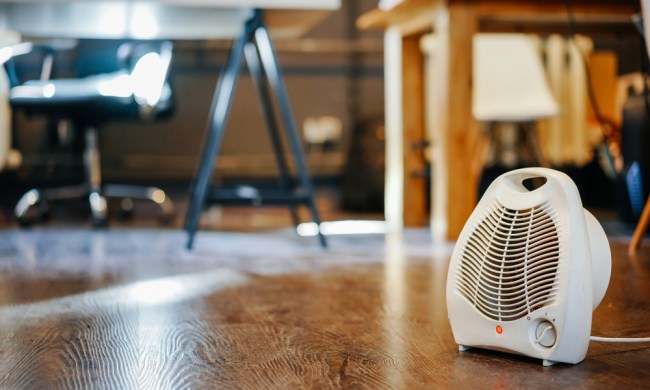Swimming pools are tons of fun for the whole family but require regular maintenance. Since fall is in full swing, pool owners know it's time to winterize. Proper winterization is the best way to protect the swimming pool from cold damage, and it eliminates much of the fuss over water quality come time to reopen next spring. If you’re not quite sure how to close a pool for winter, read on for a step-by-step guide through this important fall task.

How to close a pool for winter
When the daytime temperatures consistently stay below 65 degrees Fahrenheit, it’s time to close the swimming pool for the season. If you try to close when the weather is too warm, it can be an invitation for algae growth, which can be expensive and laborious to clean in the spring.
To prevent this growth, run the filter and keep the water chlorinated until closing time, even if no one is swimming. Then, seven days before closing, add phosphate remover.

Deep clean the pool
Deep cleaning removes all the dirt and residue that can foster mold and algae growth, cause stains, and throw the water chemistry out of balance.
Step 1: Thoroughly brush the sides and floor of the pool, skim the surface, vacuum the pool, and clean out the skimmer and pump baskets.
Step 2: This is also a good time to remove all nonessential articles, such as the ladder, stairs, mats, over-the-wall skimmers, lights, alarms, etc. Clean them thoroughly, and store them indoors throughout the winter.

Clean and store the pump
Step 1: Run the pump through a complete cycle, then backwash and clean the pool filter.
Step 2: Disconnect filter hoses, then drain and chemically clean the filter.
Step 3: Store the filter indoors for the winter, and be sure to leave any ball valves in the open position.
Drain the plumbing
Step 1: Drain the plumbing, pump, heater, pool filter, and any other peripheral pool equipment, then use a wet/dry vac or liner vac to blow any remaining water out of the equipment and lines.
Step 2: Store drain plugs in the pump basket. If you live in a colder climate, add pool antifreeze to the plumbing for added protection.
Step 3: Seal off the pool skimmer and return openings to prevent water from entering and causing freeze damage.
Step 4: Remove the return eyeball fitting and install a return plug. Close the skimmer opening with a skimmer plug.
In non-freezing climates, it is possible to skip these steps. But, in the event of a surprise cold front, be prepared to run the pump nonstop while temperatures remain below 32 degrees Fahrenheit to prevent stagnant water from freezing.

Adjust the water level
The appropriate water level for winter depends on your climate. In areas that experience freezing temperatures, lower the water by 4 to 6 inches below the skimmer for vinyl-lined pools or below the tile line for plaster pools. Those in non-freezing climates should top off the water nearly to the point of overflowing.
Adjust the water chemistry
Adjusting the water to the proper chemical balance optimizes the effectiveness of pool chemicals. Use a test kit to check the water chemistry and adjust as necessary to achieve the following readings:
- pH 7.4 to 7.6
- Alkalinity 80 to 120 ppm
- Calcium hardness 200 to 350 ppm

Shock and chlorinate
Though a deep clean goes a long way in keeping the water fresh, shocking (increasing the chlorination) the pool two days before closing will kill any lingering bacteria. Avoid covering the pool while chlorine is present, as chlorine will damage the cover.
Install an air pillow
Air pillows absorb ice pressure during cold weather to prevent any damage to the hardware.
Step 1: Inflate the pillow with an air pump and secure it in the center of the swimming pool.
Step 2: Tie it to an anchor to keep it in place, or secure it to the bottom of the pool cover. Over the course of the winter, ice pressure may pop the pillow. This is completely normal.

Install a pool cover
We recommend investing in a safety cover because it’s anchored around the sides of the pool, making it the best choice for protection against accidents and storm debris. A winter cover, either solid or mesh, is not secured at the sides but does effectively keep debris out of the pool water.
Winter pool maintenance
While proper winterization and closing procedures make maintenance easier, your work for the winter isn’t finished quite yet. Severe weather and accumulated precipitation can still wreak havoc, so plan on removing heavy snow and ice loads and pumping off rainwater before it freezes to alleviate stress on the sides of the pool. Remove sticks, leaves, and other debris to protect the cover. Then, when the weather warms again, your pool will be clean and ready for an easy opening.
Swimming pools are a great addition to any back yard, but they aren't all play and no work. In order to ensure your pool makes it through the winter and is ready to go in the spring, it is necessary to winterize. Properly winterizing your pool pays off in both the short and long term by protecting your investment and ensuring your pool is ready to go as soon as spring hits.




